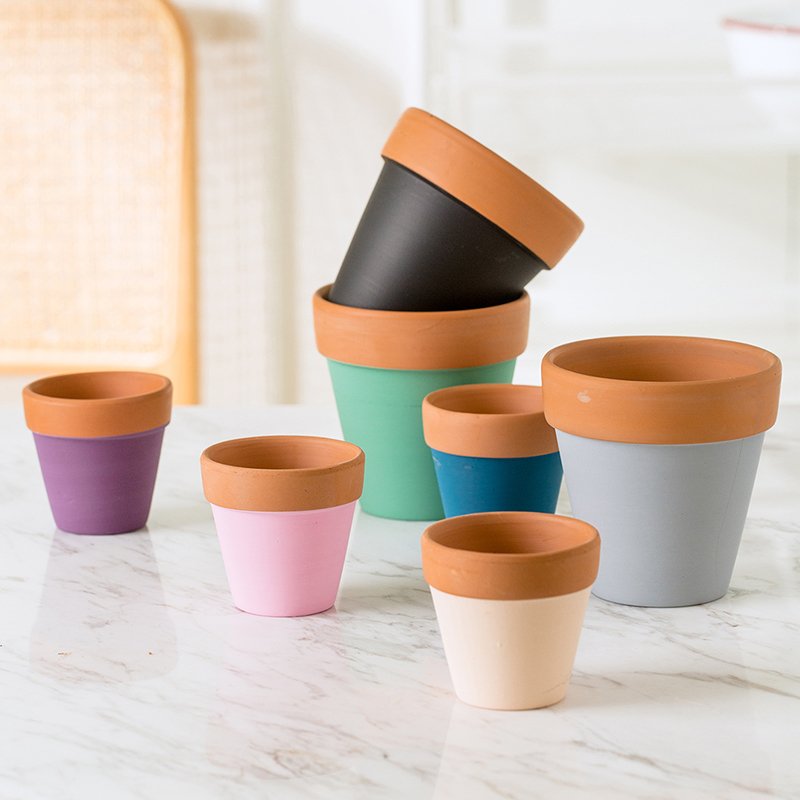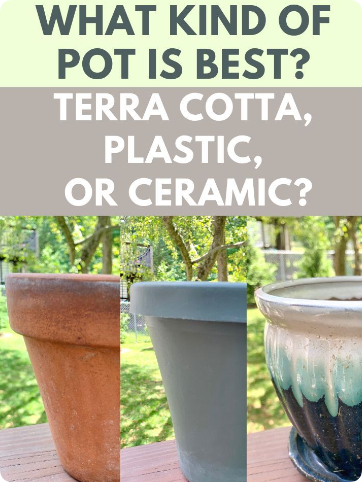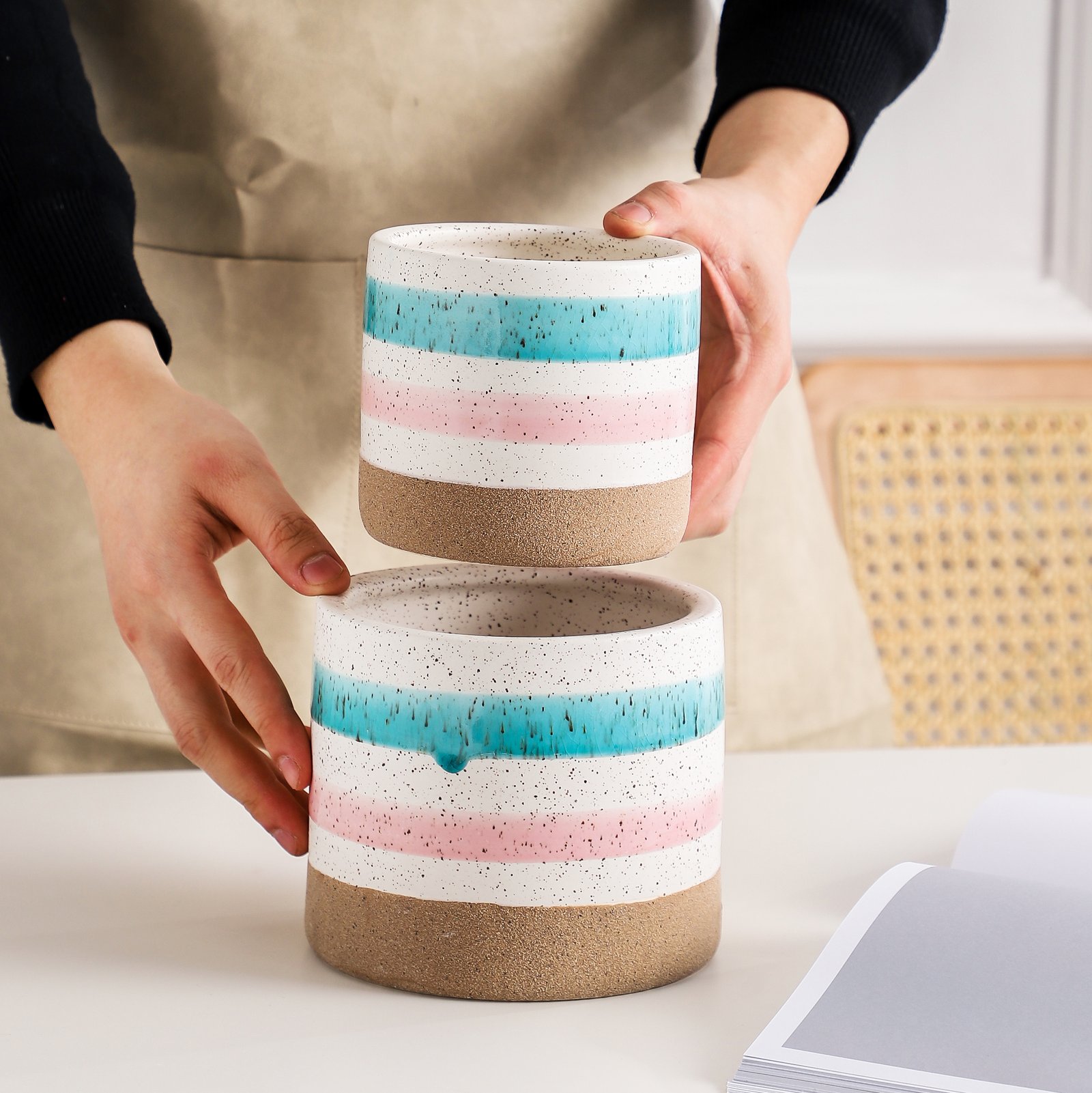When it comes to choosing the right material for your plant pots, the debate between terracotta and ceramic is a longstanding one. Both terracotta and ceramic pots have been used for centuries, but each comes with its own set of characteristics that make it suitable for different uses. In this blog, we will explore the key differences between terracotta and ceramic pots, helping B2B buyers make an informed decision when sourcing for wholesale purchases.
At Hale Planter, we specialize in providing high-quality flower pots for businesses, ranging from garden centers to interior design firms. Our extensive product line includes both terracotta and ceramic pots, so we understand the nuances that make each option appealing in different circumstances. Below, we delve deep into the pros and cons of both materials, guiding you toward the best choice for your business needs.
1. What Are Terracotta Pots?
Terracotta is a type of clay that is fired at a low temperature, giving it its characteristic red-brown color. These pots are porous and unglazed, which means they allow air and water to pass through, making them a popular choice for gardeners who want to avoid overwatering their plants.
Key Features of Terracotta Pots:
- Porosity: Allows water to evaporate faster, preventing water-logging.
- Color: The natural reddish-brown tone gives a rustic appearance that is very appealing in gardens and traditional settings.
- Weight: Generally lightweight, making them easier to transport in bulk orders.
2. What Are Ceramic Pots?
Ceramic pots, on the other hand, are made from various types of clay but are fired at higher temperatures than terracotta. They often come with a glaze, which makes them non-porous, giving them a sleek and polished look. Ceramics are popular for both indoor and outdoor use due to their diverse design options and durability.
Key Features of Ceramic Pots:
- Non-porosity: Glazed ceramic pots hold moisture longer, which can benefit plants that require consistent watering.
- Design Variety: Available in a range of colors, finishes, and shapes, ceramic pots can be tailored to fit modern, minimalistic, or luxurious settings.
- Weight: Heavier than terracotta, providing more stability, especially for larger plants.
3. Comparison Table: Terracotta vs. Ceramic

| Aspect | Terracotta Pots | Ceramic Pots |
|---|---|---|
| Material Composition | Made from clay, fired at low temperatures | Made from clay, fired at high temperatures |
| Porosity | Porous; allows for better air and water circulation | Non-porous; holds moisture for longer periods |
| Weight | Lightweight | Heavier, providing more stability |
| Design Variety | Limited to earthy tones and rustic styles | Wide range of colors, shapes, and finishes |
| Durability | Can crack in freezing temperatures | More durable but can be prone to chipping |
| Cost | Generally more affordable | Higher price due to craftsmanship and glazing process |
| Environmental Impact | Biodegradable and eco-friendly | Glazing process can sometimes involve harmful chemicals |
4. Durability: Which Lasts Longer?
When considering durability, ceramic pots often outlast terracotta pots in harsh conditions. While terracotta pots are susceptible to cracking in freezing temperatures due to their porous nature, ceramic pots, especially those with a thick glaze, offer better protection against weather fluctuations.
For B2B buyers looking to supply plant pots in regions with cold winters, ceramics may be the better option. However, for regions with warm climates, terracotta pots can perform well while offering cost-effective solutions.
5. Water Retention and Plant Health
One of the most critical differences between terracotta and ceramic pots lies in their water retention capabilities. Terracotta pots allow water to evaporate through their walls, which is advantageous for plants like succulents and cacti that prefer drier soil. The porous nature of terracotta also helps prevent root rot, a common issue caused by overwatering.
Ceramic pots, especially glazed ones, hold moisture much longer. This makes them ideal for moisture-loving plants such as ferns, peace lilies, and other indoor plants. For businesses supplying plant nurseries or florists that cater to a wide variety of plants, offering both terracotta and ceramic options can ensure the right pot is available for every plant type.
6. Aesthetic Appeal and Design Options
Terracotta pots are known for their earthy, rustic appearance. Their reddish-brown color can bring a natural, warm look to outdoor spaces and traditional gardens. However, the design options are limited, as terracotta is rarely glazed or painted.
Ceramic pots, on the other hand, offer a far wider range of aesthetic possibilities. They can be made in various shapes, sizes, and colors, with intricate patterns or smooth, minimalist finishes. Ceramic pots are often used in high-end interior design projects or modern commercial landscapes due to their versatility and luxurious appearance.
7. Environmental Impact and Sustainability
In recent years, sustainability has become a key concern for many businesses. Terracotta pots are made from natural clay and are biodegradable, making them an eco-friendly option. However, ceramic pots, while more durable, undergo a glazing process that sometimes involves harmful chemicals, making them less eco-friendly in comparison.
For businesses focused on promoting sustainable products, terracotta may be the better option. Still, ceramic pots can be sourced from manufacturers who prioritize eco-friendly glazing techniques, offering a balance between design and environmental responsibility.
All About Houseplant Pots & My Collection | terra cotta, ceramic, and plastic pots
8. Price Point Comparison: Which Offers Better Value?
From a B2B buyer’s perspective, pricing plays a significant role in bulk purchasing decisions. Generally speaking, terracotta pots are more affordable than ceramic pots due to their simpler production process. This cost-effectiveness makes terracotta an attractive option for budget-conscious buyers or for businesses looking to purchase in large volumes.
Ceramic pots, with their higher durability and more intricate designs, often come at a higher price point. However, their longer lifespan and aesthetic appeal can justify the additional investment, particularly for high-end markets or customers willing to pay more for premium products.
9. Which Pot Should You Choose for Your Business?
Choosing between terracotta and ceramic pots ultimately depends on the specific needs of your business and customer base. Here are a few key considerations:
- If you’re supplying a garden center: Terracotta pots may be more popular for outdoor gardening due to their breathability and rustic appearance.
- If your clients are interior designers or high-end retailers: Ceramic pots may be a better choice due to their variety of finishes and ability to blend with modern décor.
- For businesses catering to eco-conscious customers: Terracotta’s biodegradable nature can be a strong selling point.
- For areas with harsh climates: Ceramic pots offer more durability and can withstand extreme weather conditions.
Conclusion: Making the Right Choice for Your Business
As a B2B buyer, understanding the differences between terracotta and ceramic pots is essential for making informed procurement decisions. While terracotta pots offer affordability, breathability, and eco-friendliness, ceramic pots provide superior durability, water retention, and design versatility.
At Hale Planter, we offer both terracotta and ceramic pots, catering to businesses with diverse needs and customer preferences. Whether you’re looking for budget-friendly, eco-conscious options or high-end, designer pieces, we can help you source the best products for your market.
For more information or to explore our catalog, contact us today and let us help you make the best choice for your business.




